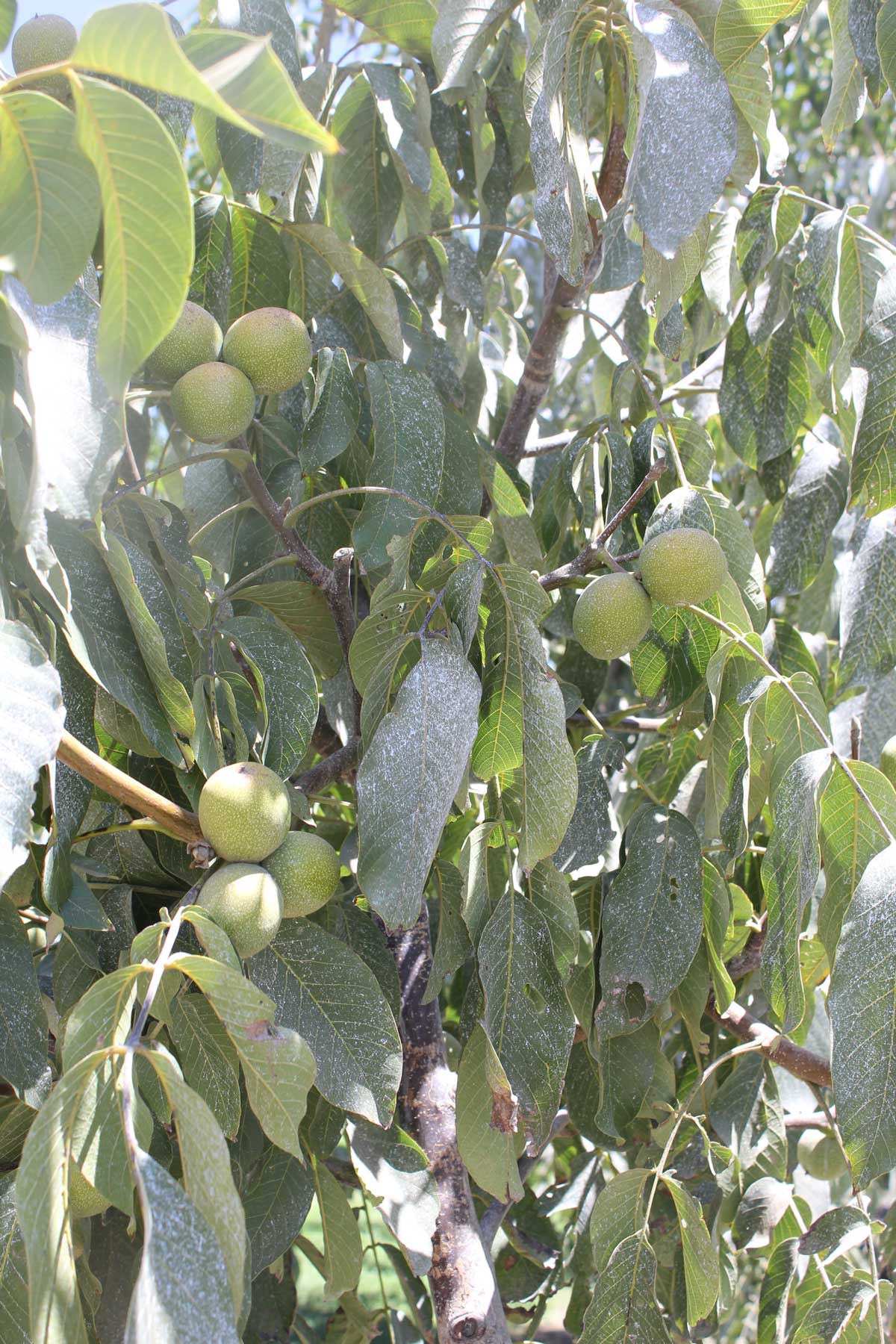
Dealing with navel orangeworm (NOW) is a numbers game, according to agronomist and PCA Robert Smith of Ultra Gro.
“The fewer number of NOW overwintering in your walnut orchard is the outcome at the end,” said Smith, who grows walnuts in Tulare County. Postharvest is not the time to become complacent about orchard sanitation in walnuts, he stressed.
“Sanitation should be a standard practice no matter what the grade sheet shows.”
Orchard sanitation is easy to put out of your mind after harvest, Smith said. But if you had any NOW damage in your walnut crop, investing in sanitation will pay off. Grade sheets that show more than 2% NOW damage call for extra attention with orchard sanitation.
Walnut trees often do not require the additional shake to remove mummy nuts, Smith said, which makes sanitation a little less expensive compared to almond and pistachio trees.
Navel orangeworm overwinters as larvae inside mummy nuts on the tree. Pupation begins in March and may continue through early May. It is important, Smith said, to complete orchard sanitation by mid-March as moths of the overwintered brood start emerging as the weather warms. Females of the overwintered generation lay their eggs singly on mummy nuts, codling moth-infested nuts or blighted nuts. The first generation, and most of the second, is completed in these nuts.
Smith said his sanitation protocol begins soon after harvest. Pruning crews will often knock down any remaining nuts. Those and the prunings are shredded. After pruning, leaves and mummy nuts are blown off the berms into the middles, where Smith uses a flail mower close to the ground to grind and eliminate overwintering sites. At times, he said, some middles are shredded twice to complete the job.
Smith said this year’s grade sheets showed less than a half percent of NOW damage in his walnut crop, and he attributes that low number to continued vigilance and sanitation.
He said he used mating disruption for the first time this year, but his pesticide application schedule was unchanged.















